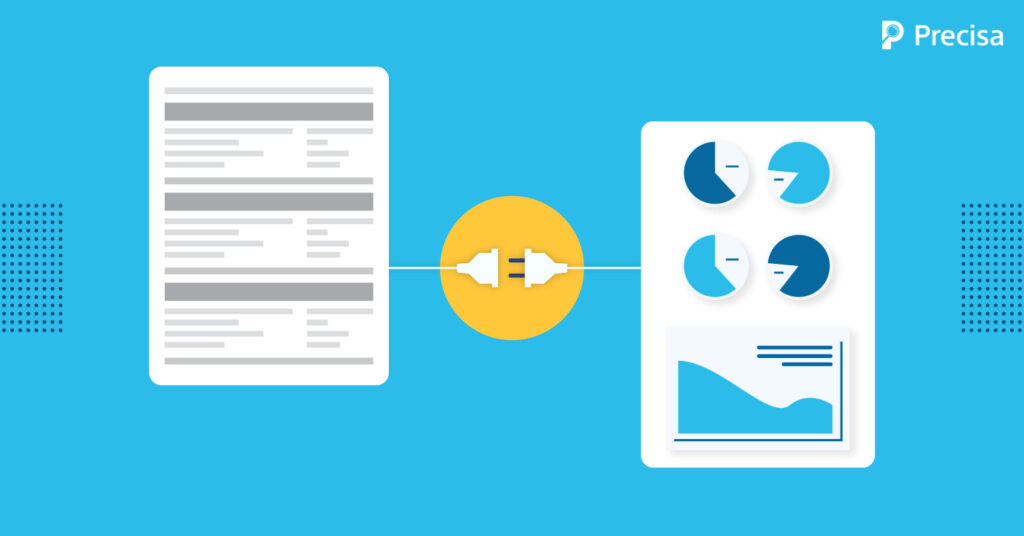Bank Statement Extraction: 5 Key Benefits of Integrating it Into Accounting Workflow

The banking habits of the public have undergone a drastic change in recent years, thanks to rapid technological advancements and increased access to banking services. From cash to ‘plastic money,’ monetary transactions have evolved to digital receipts and payments in which money changes hands within seconds.
In 2022, India topped the list of countries for the most real-time payment (RTP) transactions with 89.5 billion transactions. According to ACI Worldwide’s study, India accounted for 46% of total RTPs globally last year.
With such a huge number of transactions, financial data grows exponentially, resulting in voluminous bank account statements. In this scenario, manual and conventional bank statement extraction and analysis become time-consuming, prone to errors, and less cost-effective. The quality of accounting outputs, which rely significantly on bank statements for data, suffers as a result.
Bank statement analysis tools powered by artificial intelligence (AI) and machine learning (ML) simplify and streamline the job of collecting and evaluating bank statements and ensuring consistency of outcomes.
Here are five advantages of integrating AI-driven bank statement extraction into accounting workflows. Additionally, the article provides a simplified overview of the technical aspects of such integration.
Bank Statement Extraction & Analysis: The Significance

Let us quickly explore the importance of bank statements in accounting before getting into the technicalities of bank statement extraction.
A bank statement is a tabular summary of all account activity, displaying the full history of debits, credits, and the account’s effective balance at a given time. Accountants and financial analysts use bank statement extracts for the following purposes:
1. Track receipts and payments and analyse cash flows
Bank statements help with account receivable and payable reconciliation, enabling better cash flow monitoring and control.
2. Credit appraisals and underwriting
Appraisal of a loan application is not completed without the assessment of bank statements. Understanding loan applicants’ income, expenses, payment commitments, payback capacity, and overall creditworthiness requires a thorough examination of his/ her account activity.
3. Credit scoring
Scrutiny of account statements forms a part of the credit scoring of individuals and businesses. In addition to savings and current accounts, bank statement extraction and analysis tracks overdraft accounts, cash credits, and other lending facilities availed by the borrowing entity.
4. Preparing income tax returns
A reference point while preparing and submitting income tax returns, bank account data provides additional clarity in tax-related data such as interest earned, interest expended, net annual earning, as well as the sources of income.
5. Identifying fraudulent transactions and preventing financial crimes
Reconciliation using bank statement extraction makes it easier to spot transaction irregularities, file manipulation, and fraud, especially in corporate accounts when many staff members are authorised to perform account operations.
6. Monitoring bank charges, fees, and penalties
Bank statements are sole records of banking-related expenses incurred by the account holder or borrower, such as service fees, account maintenance charges, account penalties, and interest earned by the savings account.
Accounting Workflow Integration with Bank Statement Extraction: 5 Key Advantages
Let’s elaborate on some benefits of workflow integration with bank statement extraction process:
1. Enhanced accuracy and reliability of output
Accounting observations are used for strategic decision-making. Hence they must be error-free. Automated bank statement extraction reduces human involvement, resulting in more precise and reliable results sans errors.
2. Customisation of analysis and reporting
AI-based bank statement extraction models can be custom-trained to retrieve and interpret specific data sets from statements as needed by the user. The software categorises data, captures essential information, and examines them to provide user-specific summaries and reports.
3. Reduced time, effort, and cost
Manually sifting through pages of bank statements for pertinent information is taxing, takes a lot of time, and eventually adds to the overhead expenditures. Automation using AI reduces time and enhances productivity.
4. Ability to handle large data sets
Accounting involves the consolidation of similar, relevant information from several sources, such as multiple savings accounts. Integration with the Account Aggregator (AA) framework enables AI to securely and rapidly extract real-time data from multiple accounts.
This ability of bank statement analysers to work with massive amounts of real-time data is a distinct advantage worth seeking.
5. Emphasis on Data Security
Due to the sensitive financial and personal data that is involved in the bank statement extraction process, statement analysers follow strict data security and privacy policies. They also comply with prevalent data security regulations.
How to Incorporate Bank Statement Extraction into Accounting Workflow
Bank statements in various formats usually consist of two categories of data:
- Structured data in columns that contain transaction details.
- The unstructured data comprises the details of the bank account and other specific instructions.
Both categories of information are pertinent to bank statement analysis, and the steps involved in integrations are generally as follows.
1. Data extraction
Custom-trained AI models can filter data from different inputs like PDF statements, document scans, XLS, or data directly fetched using AA.
2. Training the AI model
The second step is training the model to recognise relevant information for analysis. This is accomplished by labelling relevant data and utilising it as the model’s training set.
3. Customise and test-run the workflow
Now it is time to revamp the accounting workflow by integrating trained bank statement extraction software to streamline the accounting process. Run the workflow to confirm that all modules in the model are working seamlessly.
4. Output review and rectification
Before exporting the findings, it is necessary to check the statement analysis for errors. The review ensures the correctness and quality of the output.
Summing Up
Balance sheet analysis is critical for individuals and businesses, as well as for accounting professionals such as bankers, NBFCs, credit analysts, chartered accountants, and even government authorities. Bank statement extraction and analysis tools backed with AI and ML technologies can simplify and speed up this process.
As the saying goes, when time is money, the fastest one makes it more. Bank statement analysers can cut costs and help generate revenue by assisting with faster decision-making. A reliable bank statement analyser should be able to integrate and adapt to any workflow and scale according to the process’s needs.
Precisa’s Bank Statement Analyser supports 700 bank statement formats and over 350 banks. The tool comes with statistical transaction analysis to detect fraud and transaction irregularities. Precisa also gives an overall credit score known as the Precisa score to understand the creditworthiness of applicants better.
Sign up today for a free demo.



